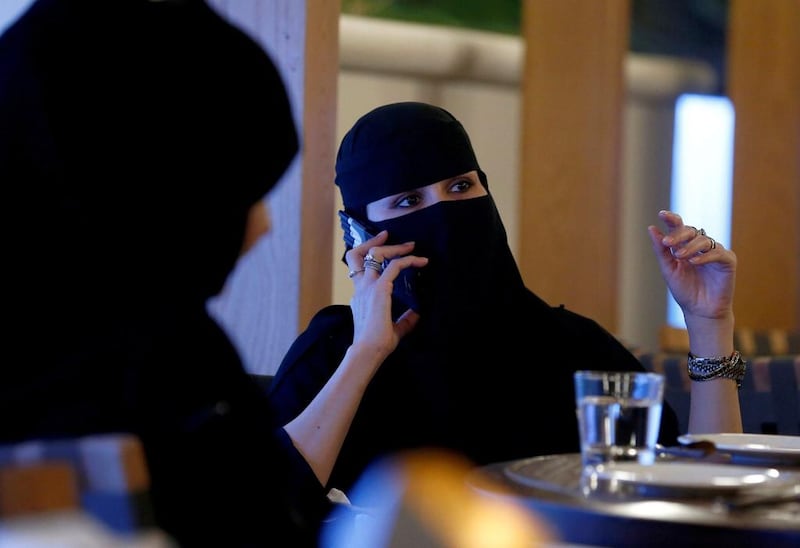Saudi Arabia is going through extraordinary times. Economically, it is trying to reduce its dependency on oil. Politically, it is influenced by the vision of a young prince, Mohammed bin Salman, who is increasingly influential in policymaking. Socially, Saudi Arabia is going through a massive change after curbing, for the first time, the powers of the religious police and opening up the country for entertainment.
All of these changes happened over a period of just a couple of years. Especially significant has been the role of Saudi women. This segment of society is, for the first time, going through a collective movement, particularly on social media, to improve their situation. Never before did Saudi women engage in such a large- scale drive to demand their rights.
To fully understand the scale of this massive shift, one needs to shed light on the situation of Saudi women in the last few decades.
Before the oil boom, women had to work harder than men. They were expected to take care of the family and to contribute to the income. Traditions justified the household demanding role women had to play.
In the 1980s, the situation of women reached an all-time low. The revenues from the oil boom improved the condition of the Saudi family and allowed people to rely heavily on domestic workers. What is more, the rise of the Salfist religious Sahwa movement limited the role of women even further. Segregation narrowed job options for women. Women were not expected to work outside the home, nor were they encouraged to do so.
The fear of westernisation and losing one’s religious identity were the two concerns that stood in the way of Saudi Arabia opening up the country. The religious discourse, especially in the 1980s and 1990s, constantly warned against the growing domination of Western culture that was seen as contrary to Islamic beliefs and values. This played an instrumental role in maintaining the cultural status quo of Saudi society.
Saudi girls growing up in that period realised how conservative values constituted the backbone of the Saudi way of life. It was not only what women were supposed to do inside, but what women were not allowed to do outside the home that created a limited breathing space for these girls.
However, that did not deter a small group of Saudi women who, in 1990, took to the streets in their cars to demand lifting of the driving ban. The protest did not only cause an uproar among conservative men, but among women too. For the first time, Saudi women challenged the status quo – and, subsequently, paid a high price for doing so. They were labelled as westernised and were accused of attempting to weaken Saudi society.
The driving demonstration showed the extent of the conservative nature of Saudi Arabia at that time. Moreover, the strong presence of the religious authority helped normalise the situation of women as it was. No more driving demonstrations took place.
The introduction of the internet in 1999 set in motion the change process for Saudi society and women in particular. It provided them with knowledge, entertainment and a private place. The internet was not only a breathing space for women who wanted more than their environment could offer, but also a realisation that there was a different reality out there. They were no longer caught up in the world of black and white which they grew up in, but the different shades of truth which initiated the spark to encourage self-realisation and individualism.
In 2005, the late King Abdullah allowed thousands of students to study abroad. In the beginning, many Saudi women were not allowed to join the programme, because the idea of a woman travelling abroad was still considered against the norm, but slowly the number started to increase.
Social media was another crucial factor that contributed to this normalisation. YouTube, Twitter, Instagram and Snapchat allowed Saudi women to broadcast their lives. It became a space to communicate ideas and creativity, as well as voice demands. Those studying abroad became an active voice in the social media world.
With the increasing numbers of Saudi females studying abroad, their presence on social media became even more significant. As a result, the normalisation of such an active presence changed the initial rejection to a growing source of inspiration – or envy. Saudi women who were initially only observers became more active. The growing number of social media users introduced a diversity of personalities that encouraged others to join.
Another factor that facilitated the increasing number of Saudi women in social media is attributed to the loss of credibility of the religious authority. Not so long ago, religious figures banned satellite, internet, camera phones, as well as travelling abroad. Then, the same religious scholars became active on social media, on national and international TV channels, and appeared in unsegregated social events while travelling abroad. Their increased visibility might have contributed to the popularity they assumed they would receive, but it also led to criticism from many Saudi men and women who believed it shed light on their inconsistencies. The aura of some religious scholars has faded.
The fear of westernisation that the religious authority warned against was no longer perceived as a threat by everyone. Rather, it has become part of the global identity of many Saudi men and women. The loss of credibility within the religious authority has opened up the door for women to voice their concerns and demand their rights. There has never been a better time for women to speak up.
When Saudi women protested the driving ban in 1990 they faced aggressive opposition from women themselves. Now, increasing numbers of women are in solidarity for their rights. Not a day passes without a hashtag trending on Twitter about the situation of women in the country. That said, there is still opposition from some women.
However, they are increasingly challenged by those who label themselves as contemporary activists – and who often stand together with the same women who protested the ban in 1990. Social norms changed from being untouchable to being constantly contested and challenged.
Last month, a Saudi women called Dina Lasloom who was travelling to Australia was stopped in transit in Manila for travelling without her guardian’s permission. The hashtag #SaveDinaLasloom trended for days during the whole ordeal. A small group of Saudi men and women decided to wait for her in the airport. One of them, a medical student named Alaa Alanazi, was detained in the airport for inquiring about her. At the same time, another activist, Mariam Alotaibi, was detained because she decided to leave her parents’ house and live alone in Riyadh. These stories became sensational hashtags that allowed Saudi women to protest and ask for their rights. It has become a daily routine and part of the social media scene.
The new social, political and economic climate in Saudi Arabia is a sign of a healthy socio-cultural development. Women are increasingly travelling and studying abroad. They went from being dependent on the family system to being independent individuals. The religious authority that dominated these women’s upbringings has now been curtailed by the government, while also losing credibility in the population. This contributes to a new – and more conducive – situation with regard to Saudi women’s demands. The coming period will show how far these women can go.
Eman Alhussein is a researcher on Middle East affairs





